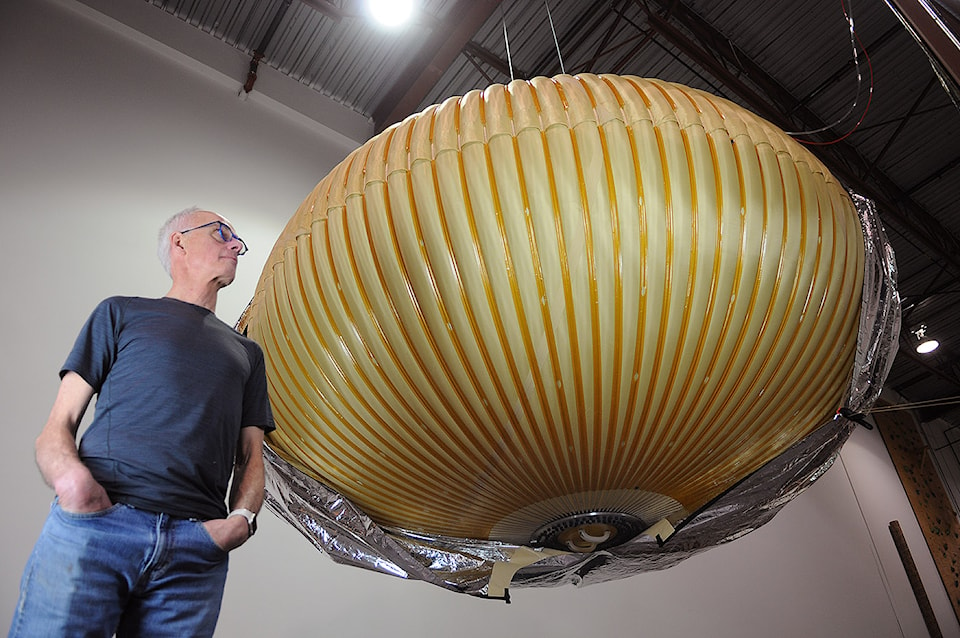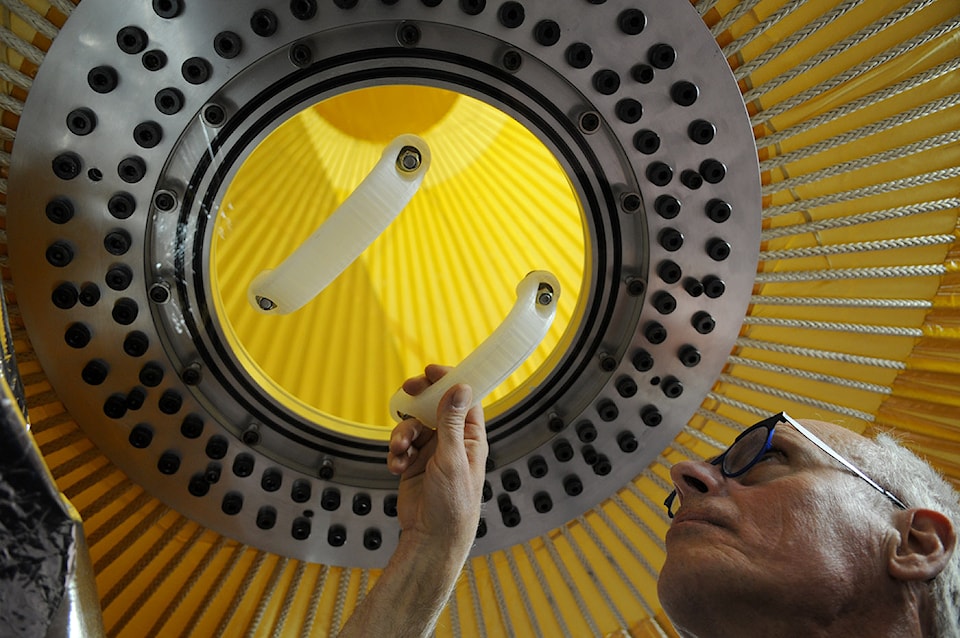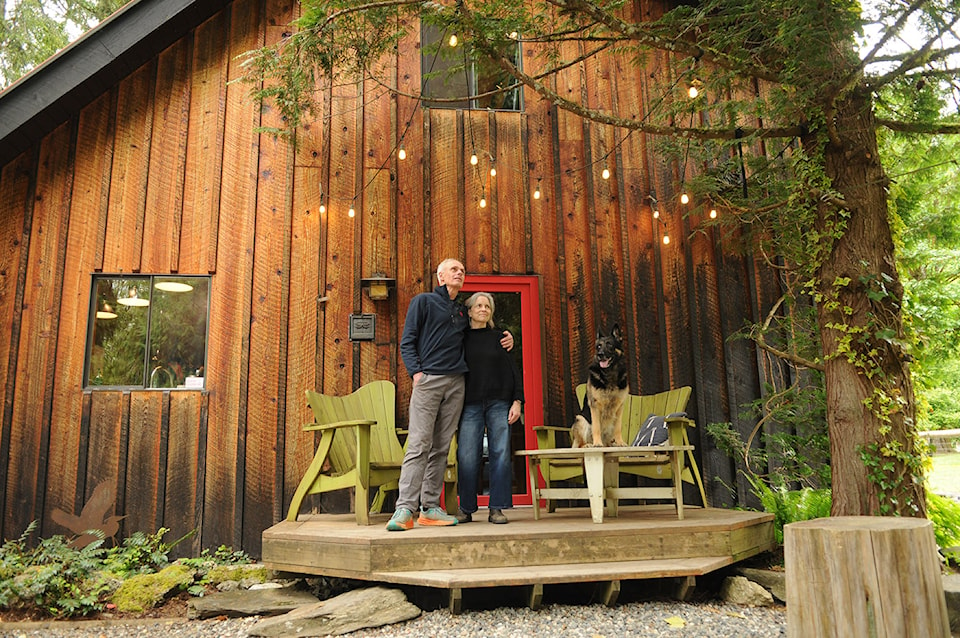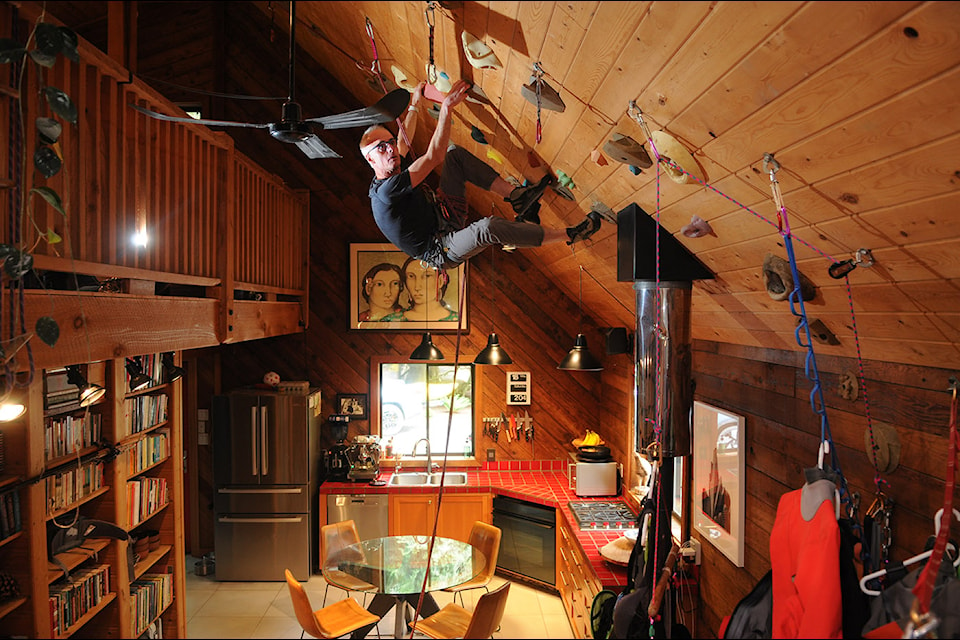Maxim de Jong once built himself a makeshift paraglider as a child.
Using nothing but wood and strips of newspaper, he had plans to test it out by jumping off a cliff.
���߲��о����I was standing on the edge of this thing and luckily there was some semblance of insight. I said to myself, ���߲��о����this is not a good idea.���߲��о�������߲��о����
He did eventually make himself another paraglider, albeit a more professional one.
In 2013 de Jong set the unofficial world record for greatest vertical distance travelled in one day after scaling and leaping off Mt. Cheam four times. Each jump from the peak was an eight-minute descent to the base using a mini paraglider he designed and built himself.
De Jong is also widely considered to be one of the world's leading aerospace engineers with a resume that includes NASA projects.
He currently serves as a co-founder of Max Space, a start-up announced during April's Space Symposium that is partnered with Elon Musk's SpaceX. Using de Jong's extensive background in expandable space habitat research, Max Space intends to launch its first habitat in 2026.

Despite always having an eye toward the skies, he considers himself to be a ���߲��о����devout resident of Chilliwack���߲��о����.
���߲��о����I���߲��о����m nuts about the outdoors,���߲��о���� says de Jong. ���߲��о����I really love the outdoors because I am an avid, very serious climber.���߲��о����
���߲��о����People certainly consider me to be a little wild.���߲��о����
Young at Heart
De Jong, 63, was born in North Vancouver to Dutch immigrant parents. Following elementary school, the family moved back to The Netherlands for a year before settling in Flanders, Belgium.
At age 19 he was pulled back to Vancouver by his love of the outdoors. There he pursued a pre-med degree, before specializing in graduate biophysics.
Despite a love for the subject matter, he openly struggled with the classroom setting. "I couldn't absorb it quick enough," de Jong says. "I never felt like I was smart."
He has since been diagnosed with attention deficit disorder, but at the time he says it was a condition that wasn't well understood.
But a tour of a highly regarded research lab in his final year was what he considers his "flick of the switch" moment: de Jong wanted a life outdoors under a big sky, not one stuck inside a lab.
"I left university, I just walked straight out," he says. I couldn't take it anymore."
De Jong's disillusionment with an education system he considered to be regimented and constrained, led him to starting his first company in his mid-20s; Extreme Mountain Gear based in False Creek, Vancouver. He started by providing training services for outdoor extremists as well as tactical equipment support.
He began offering courses around the world, using his work as an opportunity to travel.
His work brought him the luxury of spending time in countries all across the globe; Venezuela, Peru, Bolivia, Brazil, Namibia, South Africa, and Colombia, where he introduced communities to paragliding and climbing.

Despite living in Colombia in what was a turbulent time during the drug war, de Jong looks back fondly on his time there.
���߲��о����I was working in Colombia right when they caught Pablo Escobar in the early nineties,���߲��о���� he says. ���߲��о����It was my favourite country in South America, but it was a very difficult time.���߲��о����
For more on some of de Jong���߲��о����s notable climbs, view slideshow above.
But de Jong���߲��о����s desire for the extreme soon gave way to an internal conflict. He thought back to his early days in Vancouver where he���߲��о����d had a group of six friends who shared interests in extreme, thrill-seeking hobbies ���߲��о���� mountain climbers and paragliders alike. Less than 15 years later, only de Jong and one other were still alive.
���߲��о����I���߲��о����m a numbers guy ���߲��о���� you do something like that long enough, there���߲��о����s a good chance you���߲��о����ll end up dead,���߲��о���� he said.
That realization led him toward safer roles in more of a consulting capacity. He also started to realize how lonely his lifestyle had made him.
���߲��о����The big hole in my life was I really wanted, you know, to share my life with somebody,���߲��о���� admitted De Jong. ���߲��о����My private life was disastrously difficult just because I was always away ���߲��о���� always doing risky stuff.���߲��о����
De Jong was teaching in Salt Lake City ���߲��о���� ���߲��о����terribly depressed,���߲��о���� he admits now ���߲��о���� when he was set up on a blind date.
The activity? Paragliding. But that wouldn���߲��о����t be his biggest leap of the day.
���߲��о����I took one look at her and she has these big beautiful brown eyes and I thought ���߲��о����no, this is not good���߲��о����.
���߲��о����Laurie and I basically just decided we were meant for each other. That���߲��о����s fairy tale stuff, but we got married a year later and it���߲��о����s now been 31 years or something, it���߲��о����s just gotten better every year.���߲��о����
Following their marriage in 1994, the young couple looked north of the border to begin their life together.
They settled into a home de Jong built for them on a plot of land he had discovered when a gust of wind sent the outdoorsman off course in a previous paragliding trip. The two then spent the next couple of years enjoying their hobbies in the mountains as they spent their free time climbing, hiking, and of course, paragliding.
Thirty years on, it is where they remain with he, his wife Laurie, their two children Sigourney and Nemo, and dog Sasha, calling their land off the Chilliwack River home.
A visibly smitten de Jong admits he still gets excited to drive home from work every day.

Entering Space
In the late 1990s, the couple noticed there was a lack of high-tech equipment in the paragliding community at the time ���߲��о���� one which was growing immensely. They started a company called Thin Red Line, in which de Jong used his knowledge and experience to design harnesses. The goal was to make them lighter, but stronger than ones already available.
De Jong, of course, tested every single harness out himself.
The company was founded in 1998 and just a year later, was hit at its first trade show, rushing to fill orders from all over the world.
���߲��о����I still fly my harnesses today. They���߲��о����re the best that are out there.���߲��о����
It wasn���߲��о����t until the early 2000s that de Jong���߲��о����s focus shifted towards the aerospace industry, and attracted the attention of Bigelow Aerospace in Las Vegas. The company was working on an undisclosed project and having difficulties integrating fabrics to the strength that de Jong had with his harnesses. Bigelow began reaching out to de Jong, requesting numerous samples of his fabric designs.
���߲��о����I did this for about half a year and I didn���߲��о����t charge for it. And finally, I said no because like, I need to know what it���߲��о����s for.���߲��о����
Bigelow refused to elaborate for de Jong, who promptly halted any further work. Months later, they asked him to join the team in helping design the first expandable space habitats, later dubbed the Genesis Program.
De Jong was brought down to Las Vegas to meet with Bigelow Aerospace officials, where they were candid about how successful his fabric designs were.
���߲��о����It turns out that every single strap that they tested, they had farmed it out to about 15 different manufacturers in the U.S.,���߲��о���� he says. ���߲��о����Our strengths came back No. 1 in every single test.���߲��о����
Thin Red Line then slowly took over the project design using de Jong���߲��о����s innovative fabric technology to create both renditions of the Genesis project.
Nearly 20 years on, his creations are still orbiting Earth.

Lasting Legacy
Following his successful work on the Genesis spacecrafts, de Jong quickly became regarded as one of the pioneers in researching and designing expandable fabrics to be used in a space environment.
���߲��о����Despite their (Genesis crafts) success, we realized we couldn���߲��о����t efficiently scale up to the bigger sizes that we really needed in space. So, after they flew, I took an entirely different design path to ultimately develop an expandable architecture that is fundamentally predictable and infinitely scalable.���߲��о����
De Jong���߲��о����s extensive background in space research has reached beyond just habitats, with de Jong aiding in the research and design of planetary entry pods, probes and atmospheric entry vehicles.
Surprisingly though, space research isn���߲��о����t the legacy he feels he wants to leave.
���߲��о����I do think we need to put much more attention into Earth. We���߲��о����re doing such a crappy job of taking care of the earth,���߲��о���� de Jong says.
���߲��о����But what I would like to see is that the zero gravity or microgravity of Earth orbit can be used for technology development, stem cell research, pharmaceutical research that could help people who are not as fortunate as we are.���߲��о����
With his expertise and experience, large companies in the U.S. have been trying to recruit him for decades. But the Chilliwack resident has given the same answer every time.
���߲��о����No,���߲��о���� he says. ���߲��о����It���߲��о����s gorgeous here.���߲��о����
Chilliwack is not just home to some of the world���߲��о����s most advanced aerospace capsule technologies, but also home to a family. And it���߲��о����s one that doesn���߲��о����t plan on going anywhere.
���߲��о����And, you know, I think that���߲��о����s it in a nutshell.���߲��о����
Today, the local man whose work lives among the stars remains as grounded as ever. But that thrill-seeking little boy still exists. You can find him on the climbing wall that hovers above his kitchen table, or in the mountains, or pushing boundaries in his lab.




